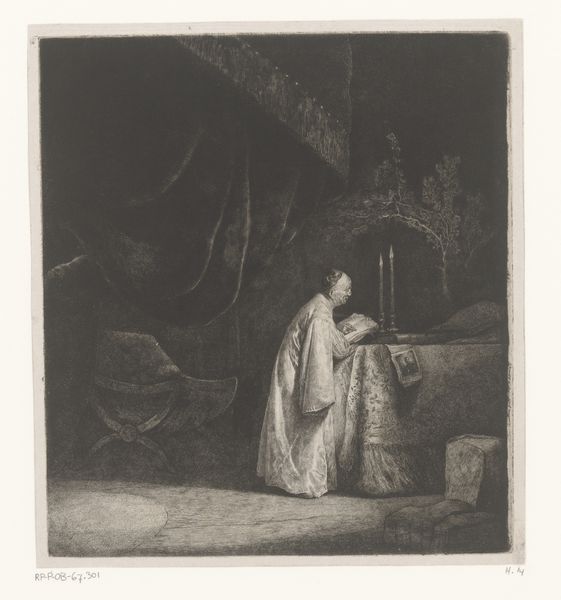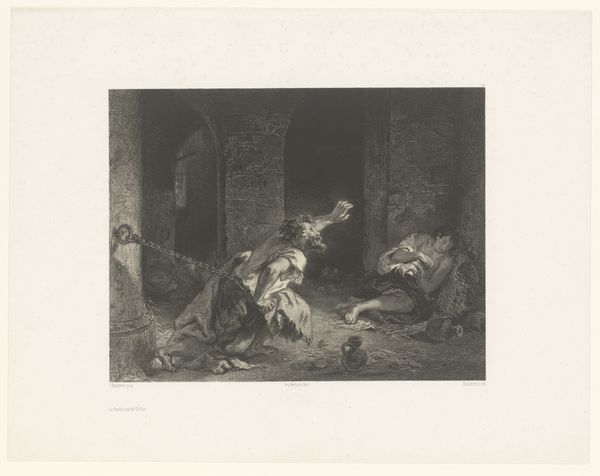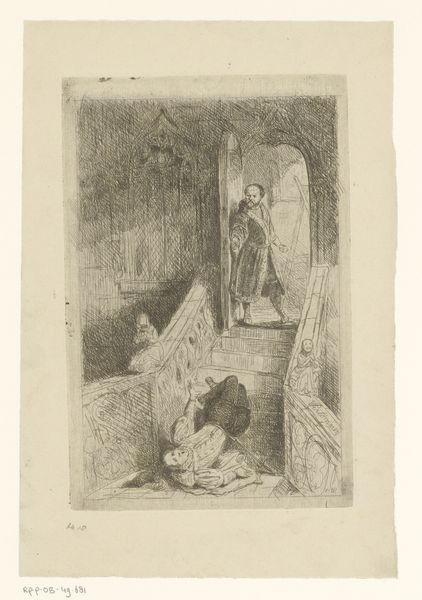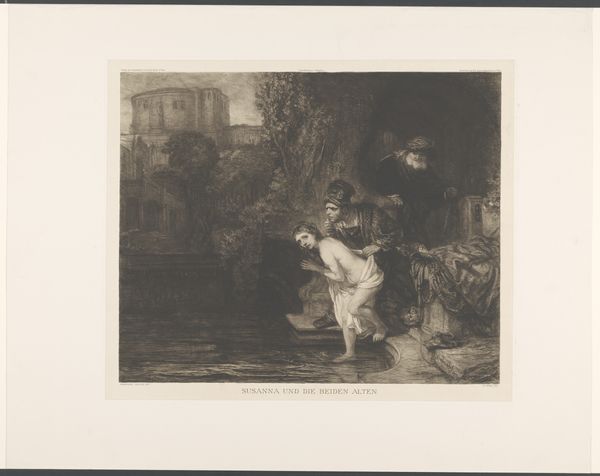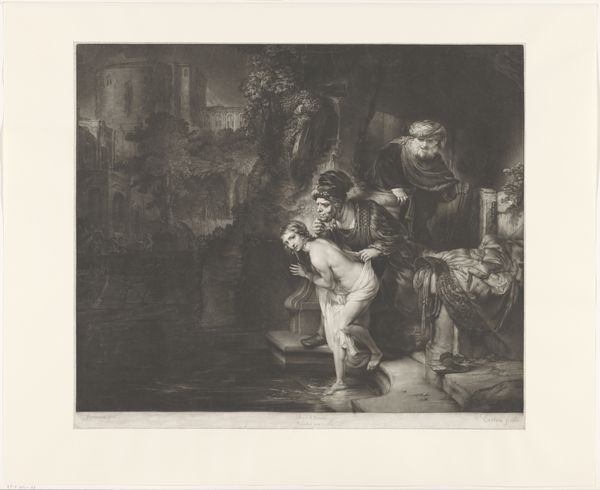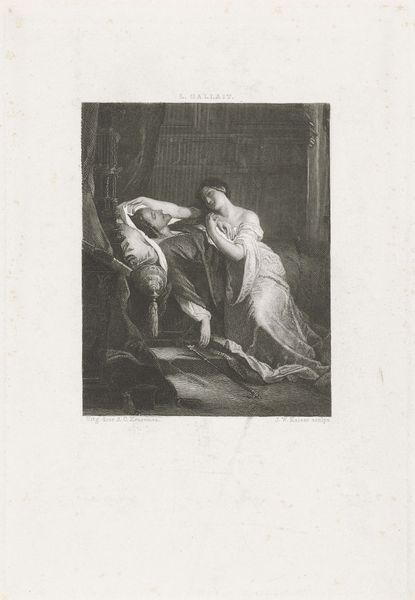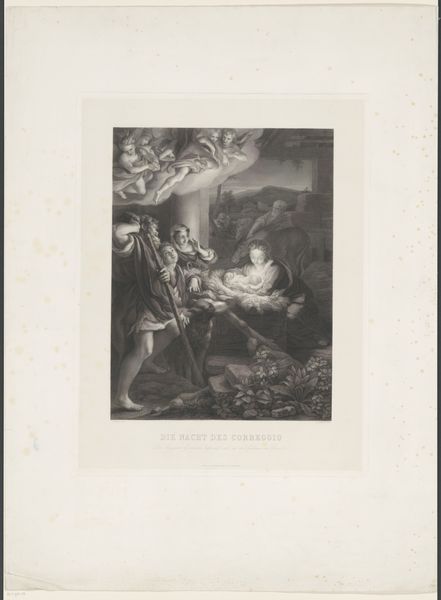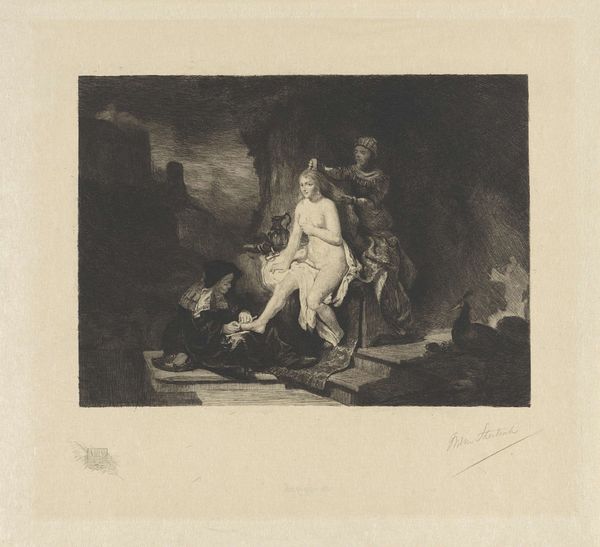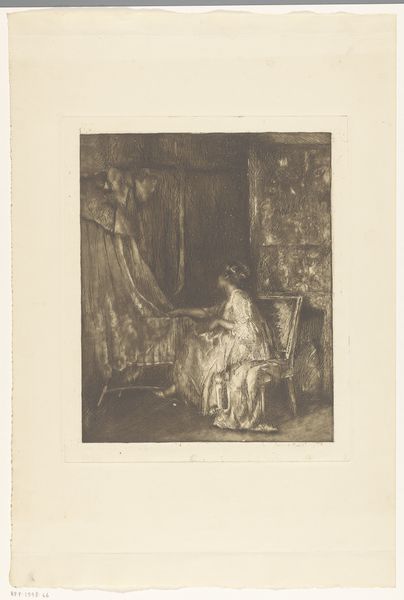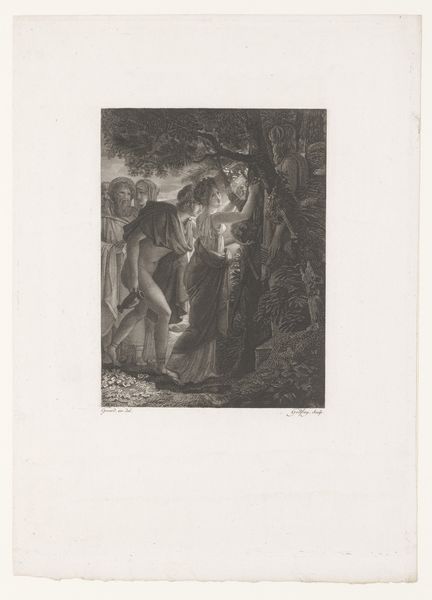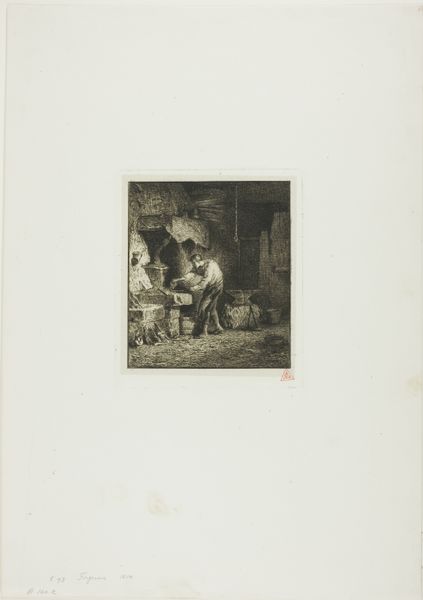
Dimensions: height 185 mm, width 167 mm
Copyright: Rijks Museum: Open Domain
Curator: Here we have Jean-Pierre Norblin de la Gourdaine’s “Opwekking van Lazarus”, or "The Raising of Lazarus" as we'd say in English, an engraving dating from around 1774 to 1789. Editor: The mood is immediately striking. It's shrouded in darkness, but then illuminated with these dynamic sweeps of light. A real study in chiaroscuro. You feel the somber quality of it deeply just looking at the process alone. Curator: Absolutely. Norblin was known for capturing these dramatic moments, and placing them within very specific socio-political frameworks. Religious paintings like these would appeal to very wealthy patrons interested in upholding tradition in a rapidly changing world. Editor: And the means he's chosen to reproduce this scene - engraving - it allows for precise lines and meticulous detail, right? You can see every fold of fabric, every gesture expressing emotion and those tonal contrasts. Curator: Indeed. Think about the economics of engraving during that period. It was a meticulous, highly skilled, and often collaborative endeavor and allowed the dissemination of images and ideologies to a wide audience. How artists positioned themselves to take commissions determined the popularity. Editor: And considering the labor invested in engraving as a technique, it feels at odds with the apparent miracle portrayed here. There’s a tension between this belief and the time it must’ve taken to produce the image that adds another layer, doesn’t it? Curator: Certainly. Also, notice how the artist presents Lazarus almost stage-lit within the dark and almost cramped scene. It really speaks to Baroque dramatic styles meant to connect faith with the power and money to perpetuate religious values. Editor: I see your point. This engraving, through its material choices, scale, and careful process, acts almost like a miniature stage production with Norblin at the reigns. Thanks, that brings such perspective. Curator: And I appreciated how your close looking directed us back to the actual labor embedded in the artwork itself!
Comments
No comments
Be the first to comment and join the conversation on the ultimate creative platform.
